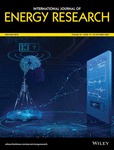Preheating strategy of variable-frequency pulse for lithium battery in cold weather
Funding information: Beijing Natural Science Foundation; National Natural Science Foundation of China
Summary
Aiming to the issue of charging difficulty and capacity fading for lithium-ion battery at low temperature, this study proposes a preheating strategy using variable-frequency pulse. The innovation of this paper is to propose the thermo-electric coupling model based on the electrochemical impedance spectroscopy of battery at different temperatures, integrated with variable frequency changing for pulse method to develop an effective inner pre-heating strategy. Meanwhile, the evaluating method of impact of this strategy on capacity fading of battery has also been proposed to examine its effectiveness, to find the optimal strategy. First, temperature rise model and the thermo-electric coupling model at different temperatures according to the equivalent circuit model of battery are presented. Further, optimal heating frequency of current pulse at different temperatures is calculated according to the changing of internal impedance. The results show that the optimal variable-frequency pulse pre-heating strategy can heat the lithium-ion battery from −20°C to 5°C in 1000 seconds. Meanwhile, it brings less damage to the battery health and improves the performance of battery in cold weather based on the views of power consumption, capacity attenuation, and internal impedance changes.




